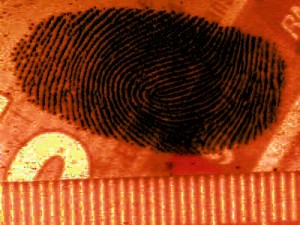WEDNESDAY, 21 MARCH 2012
TNT is still used in many explosive devices, and the by-products from a TNT explosion can contaminate groundwater and soil for years after detonation. Techniques such as sniffer dogs, ion mobility spectroscopy and fluorescent chemical “noses” can all be used to detect TNT, but these are not always available in poorer areas or suitable for use by untrained personnel. Detecting TNT at very low concentrations has been a challenge investigated by many scientists because of the obvious benefits to human health, the environment, and the military.In their new method, Ayyappanpillai Ajayaghosh and fellow researchers used OPVPF, a perfluoroarene-based gelator that forms stable gels in non-polar solvents such as hexane at room temperature. OPVPF fluoresces green when in solution, yellow when it forms a gel and orange-red when the gel is spread onto filter paper. The team suspected that TNT or its by-products, which are also electron deficient aromatic molecules, would interact strongly with OPVPF, quenching its fluorescence.
While a solution of OPVPF responded only weakly when exposed to TNT, both the gel and the gel-coated paper showed a fast and strong response to TNT exposure. The success of the gel-coated filter paper suggests that a “test-strip” could be designed that could be easily used to test for TNT in solid, vapour, or solution form.
Written by Stephanie Boardman
DOI: 10.1021/ja210728c
http://www.rsc.org/chemistryworld/News/2012/February/tnt-explosives-detection.asp

